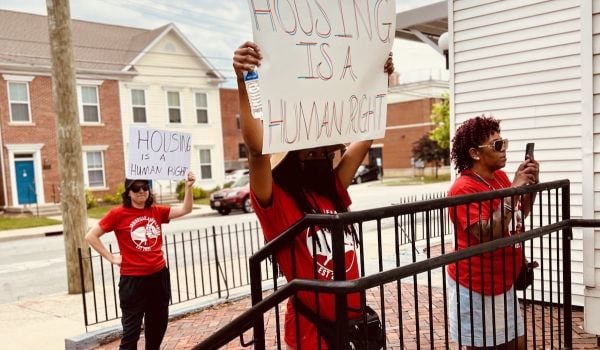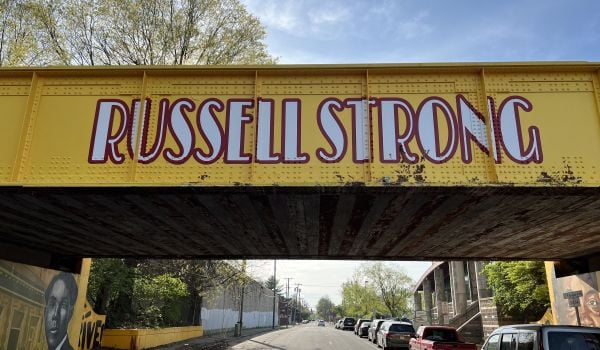In a municipal bond sale dated April 21, 2022, the Louisville/Jefferson County Metro Government in Kentucky borrowed $212 million from investors. It was a “general obligation bond” sale, meaning the metro government will repay the bonds out of local tax revenues, in slices that start next year and run till 2042, including 4-5% interest depending on the maturity dates. Interest income from the bonds is exempt from federal income taxes. Like most major cities, Louisville typically does at least one general obligation bond sale every year. The borrowed funds usually pay for construction and infrastructure projects outlined in the city’s capital budget.
The financial advisors who buy and trade municipal bonds on behalf of their clients review hundreds of document pages as part of their due diligence — comprehensive annual financial reports (also known as CAFRs), ratings agency documents, audits. They want to come up with their own assessment of the issuing government’s fiscal health, which is one of the main factors to determine how much interest they end up offering to charge as part of a bond sale. They want to fully understand the risk they’re taking when investing their clients’ dollars in these municipal bonds.
For the first time anywhere, investors and their financial advisors in Louisville municipal bonds have access to a new kind of risk analysis rooted in the social, racial and environmental justice demands of local racial justice activists in Louisville. For more than two years, the Louisville-based Root Cause Research Center has been working closely with Activest, a new kind of financial analysis firm devoted to what it calls “fiscal justice.” In the firm’s first in-depth report on a government unit, it determined that the Louisville metro government budget would be $90 million stronger on an annual basis if it heeded local activists’ demands for changes to public safety, workforce policy and economic development. That’s about 10% of the metro’s annual budget.
Financial advisors and investors will react differently to this new analysis. Some may not deem it worth considering at all. Some may avoid investing client funds in Louisville’s municipal bonds in the future or sell any that they’ve already bought. Activest is betting that at least some investors may decide to use their privileged position as bondholders to nudge the metro government toward making changes that align with the demands of local activists, because it turns out those changes also end up reducing the risk level in their portfolios. The report even includes a sample letter to that effect for a bondholder to send to the Louisville metro government.
“It’s about the power dynamics,” says Chelsea McDaniel, senior fellow at Activest. “Our intent is to start moving more of the power over how funds are being dispersed and the impact of those funds back to people.”
For many decades, the power dynamics around the municipal bond market have silently but steadily privileged wealthy investors and often their exclusively white communities. In “The Bonds of Inequality: Debt and the Making of the American City,” author Destin Jenkins details the mostly hidden or forgotten history of the municipal bond market and its role in perpetuating systemic racial inequality.
Looking back, it seems all too predictable. Over the first few decades of the 20th century, the bureaucrats, ratings agencies and bankers in power were almost exclusively white men, interested in doing business only with other white men, as Jenkins writes about in his book. And those white men worked together to facilitate municipal bond issuances that financed parks and schools and other amenities in white neighborhoods while ignoring Black neighborhoods — or worse, financing highways or other large projects that displaced thousands of Black residents. When federal policies later encouraged the construction of large public housing developments, bond-issuing local public housing authorities learned to place large projects in historically redlined areas where land was cheap to acquire and resistance to the destruction of communities was easiest to ignore, giving their bondholders confidence they could complete those projects and repay their investments in a reliable, timely fashion.
Jenkins’ book also details how it became standard practice in lean years to cut local services to Black neighborhoods like sanitation, building code enforcement and public housing operations while never missing an interest payment to wealthy bondholders, lest a city risk having its bond rating downgraded, which generally results in having to make higher interest payments. Any attempt later to increase local public spending on education, health care or other social services risked bond rating agencies issuing warnings in bond investor publications about profligate local governments being fiscally irresponsible. But bond issuances in support of convention centers, stadiums and other large headline-grabbing projects never seemed to attract the same kind of scrutiny — in part because they were seen as being in service to corporations and sports franchises whose owners and executives happened to be almost entirely white.
Jenkins raises the question of whether cities should be so dependent on the bond market in the first place. Some amount of borrowing might make practical sense — such as lines of credit to pay workers, contractors and vendors in between the periodic large cash influxes from annual or semi-annual property tax payments. But there are unique historical circumstances behind how the municipal bond market became the primary way cities pay for big-ticket projects like infrastructure, housing or economic development. By reexamining those circumstances and how the history of municipal bonds unfolded from there, Jenkins makes the case that there is nothing natural or inevitable about the way the municipal bond market works.
There is no argument from Jenkins that municipal bondholders are anything but powerful. And they’re not going anywhere any time soon — there’s currently $4 trillion invested in the municipal bond market, including $512 billion in new municipal bonds issued across 13,905 municipal bond sales in 2021.
Activest is counting on municipal bondholders who care enough about social, racial and environmental justice to align some of that power with grassroots organizers who are calling for everything from defunding police to higher spending on mental health care and other social services, more deeply affordable housing, or climate change mitigation.
McDaniel says Activest is currently tracking around 100 issuers in the muni-bond market, including local governments, utilities, education systems and some hospital systems. There are around 15 of those issuers where, like Louisville, the firm has cultivated relationships with local activists such as the Root Cause Research Center to guide more in-depth analysis.
In Louisville, for example, McDaniel says it was already having conversations back in early 2020 with Root Cause Research Center about patterns of over-policing that seemed to overlap with city-led redevelopment plans that had local activists concerned about gentrification. Those patterns of over-policing were later found to have led police officers to Breonna Taylor’s door and contributed to her subsequent killing by police gunshot. Her death led to the metro government eventually paying Taylor’s family $12 million. From 2017 to 2020, Activest found the city paid an average of $7.2 million a year in similar settlement payments related to police activity.
“Root Cause Research Center was raising that flag ahead of time, before that even really reached national news,” McDaniel says. “And there are countless other things that they have been flagging and really giving us insight, and the next step is adding our fiscal justice analysis and traditional credit analysis to what the folks on the ground are saying.”
A lot of the work is similar to what municipal bond investors do, reviewing city budget documents and ratings agency reports and audits, and even listening in on city council hearings, according to Homero Radway, senior analyst at Activest. Radway came to Activest after 20 years in conventional finance, much of that time spent underwriting or investing in municipal bonds.
“I would say 70% of it is similar to working in conventional finance,” Radway says. “The understanding of the social economics is similar, the understanding of the city’s debt profile and financials are similar. What is very different is the perspective. Underwriting a bond at Morgan Stanley, I would think about median household income in a way that I am less concerned about the tails, less concerned about standard deviations, whereas here, the standard deviations is the story, right? It’s the story of inequality.”
Activest looked at the wage gap between Louisville’s white and Black residents and estimated that due to Black residents being underpaid for similar work, the city was losing out on $43 million in local income taxes. Add to that $11.7 million a year in property taxes the city was not collecting as a result of various economic development incentive programs. Add to that $30 million a year the city is spending on an economic development subsidy that the Root Cause Research Center and its local allies oppose, plus the $7.2 million a year in police-related settlement payments — and that’s $90 million dollars a year that Louisville’s metro government is losing out on because of racial injustice in its spending patterns, Activest’s report says.
The firm believes its fiscal justice hypothesis shows how cities can improve their fiscal health by making certain changes in alignment with local activists focused on the well-being of Black communities and other communities historically targeted by systemic violence. “Municipalities that treat their citizens better have better fiscal outcomes,” Activest co-founder Napoleon Wallace told me in an earlier interview.
A new report from researchers at the Wharton School of Business, conducted in partnership with Activest, supports the firm’s thesis that the unjust policies and practices it’s calling out “are associated with increased credit risk for investors in municipal securities, even when controlling for a variety of economic, fiscal, and bond risk indicators.”
There are already investors voting with their portfolios to support the fiscal justice approach. While Activest did start out with philanthropic support and still does raise some money from foundations for its work, much of the organization’s funding now comes from its share of asset management fees via its partnership with Adasina Social Capital, a registered investment advisory firm that is Black-owned and majority-operated by women, people of color, and members of the LGBTQ+ community.
There’s actually a waiting list for new investors to invest new dollars into Adasina Social Capital’s fixed income investment pool, which it started co-managing with Activest using its fiscal justice approach in 2020, as Next City covered at the time. It’s a two-pronged approach, looking to invest in cities that already are better performing in terms of fiscal justice as well as cities like Louisville that may be performing poorly but have strong local activists with a clear agenda that bondholders can get behind.
“We wouldn’t necessarily say we have a clean hands approach,” McDaniel says. “But if you are going to be holding these bonds, this is how you can show up as more of an activist bondholder, these are the requests that residents have and these are the things to push on or policies to adjust to reduce some of the risks in your portfolio.”
This article is part of The Bottom Line, a series exploring scalable solutions for problems related to affordability, inclusive economic growth and access to capital. Click here to subscribe to our Bottom Line newsletter.

Oscar is Next City's senior economic justice correspondent. He previously served as Next City’s editor from 2018-2019, and was a Next City Equitable Cities Fellow from 2015-2016. Since 2011, Oscar has covered community development finance, community banking, impact investing, economic development, housing and more for media outlets such as Shelterforce, B Magazine, Impact Alpha and Fast Company.
Follow Oscar .(JavaScript must be enabled to view this email address)


















